˅˅˄˄
“Estrellas, sólcitos, lunas, lúnulas, luciérnagas, linternas, luces, lustres; doqier se vidienredan a la ciudá se constelan i disconstelan, se qeman, se apagan, cholucen, llueven, vuelan.” (1)
Sueño urbano , masa flotante de una (Ti)imaginación (2) por fractura expuesta, espejismo de una planeación, torsión ruinística y edificamento analfabeto disdestellar. Dos veces “V” (3) yuso y upa. Imágenes plegadas para llevar o guardar, en biombos.
- SOLAR, Xul. “Poema”. Ediciones dos amigos. Edición numerada. Buenos Aires, febrero 1981.
- Panlinguando un poco. “Actualmente trabajo en una lengua monosilábica [la panlingua] […] sin gramática, que se escribe tal como se pronuncia, de raíces básicas, unívocas e invariables, combinables a voluntad, de fonética fácil, musical y en la que todos los sonidos pronunciables estén registrados […] La letra más dura, correspondiente a Saturno y que representa cantidad, que es como la ley de este mundo, es la T. Ta significa cuanto; Ti, poco; Tu, mucho; Te, menos, y To, más…” Jorge Swartz, “Sílabas las estrellas compongan: Xul y el neocriollo”, en: Xul Solar, Visiones y revelaciones, Buenos Aires, Malba – Colección Costantini, 2005, p. 43.
- “Alguien en B. Aires tenía, ya desde varios años algún proyecto en boceto, de una ciudad digámosla villa, que cualquier día podría presentarse sobre el horizonte, asomarse por entre las nubes, aparecer en cualquier lugar del aire donde no había nada el día antes, es decir una villa que flote, derive o navegue por los aires, una villa volante, una Vuelvilla, que por brevedad llamaremos V.V.
«Stars, small suns, moons, lunulas, fireflies, lanterns, lights, lustres; wherever they are entangled in the view of the city, they form and untangle constellations, burn, fade, glow, rain, fly.»(1)
Urban dream, floating mass of a (Ti)imagination (2) by exposed fracture, mirage of a planning, ruinistic torsion and illiterate disdestellar building. Two times «V» (3) yuso and upa. Folded images to carry or store, in screens.
1. SOLAR, Xul. «Poem. Editions two friends. Numbered edition. Buenos Aires, February 1981.
2. Panlinguing a little. «I am currently working on a monosyllabic language [the panlingual] […] without grammar, which is written as it is pronounced, with basic, univocal and invariable roots, combinable at will, with easy phonetics, musical and in which all pronounceable sounds are registered […] The hardest letter, corresponding to Saturn and representing quantity, which is like the law of this world, is the T. Ta means how much; Ti, little; Tu, a lot; Te, less, and To, more…» Jorge Swartz, «Syllables the stars compose: Xul and the Neocreole», in: Xul Solar, Visiones y revelaciones, Buenos Aires, Malba – Colección Costantini, 2005, p. 43.
3.»Someone in B. Aires already had, for several years, some project in sketch, of a city let us say villa, that any day could appear on the horizon, leaning out among the clouds, appearing in any place of the air where there was nothing the day before, that is to say a villa that floats, derives or sails through the air, a flying villa, a Vuelvilla, that for brevity we will call V.V.
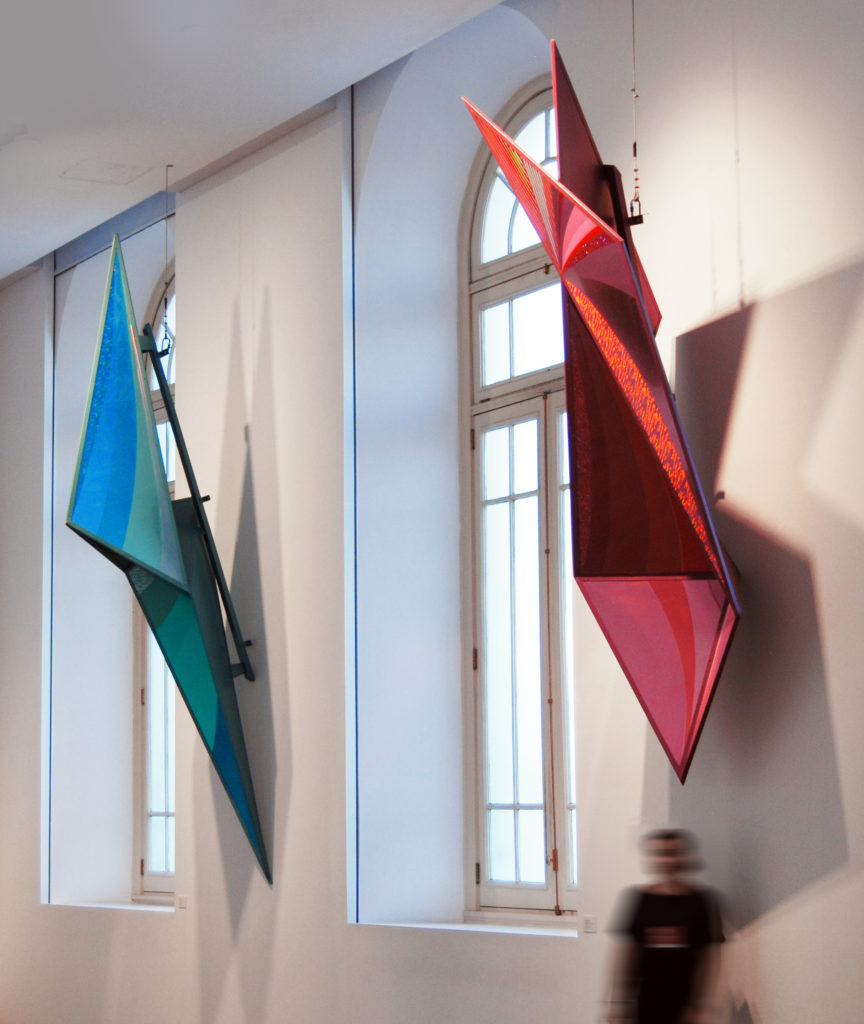
«˅˅˄˄» Policarbonato compacto, vinilo, hierro esmaltado, 400 x 80 x 70 cm ( asul) 360 x 120 x 80 cm (roza) 2015. / «˅˅˄˄» Compacto polycarbonate, foil, enamel iron, 400 x 80 x 70 cm ( asul) 360 x 120 x 80 cm (roza) 2015.
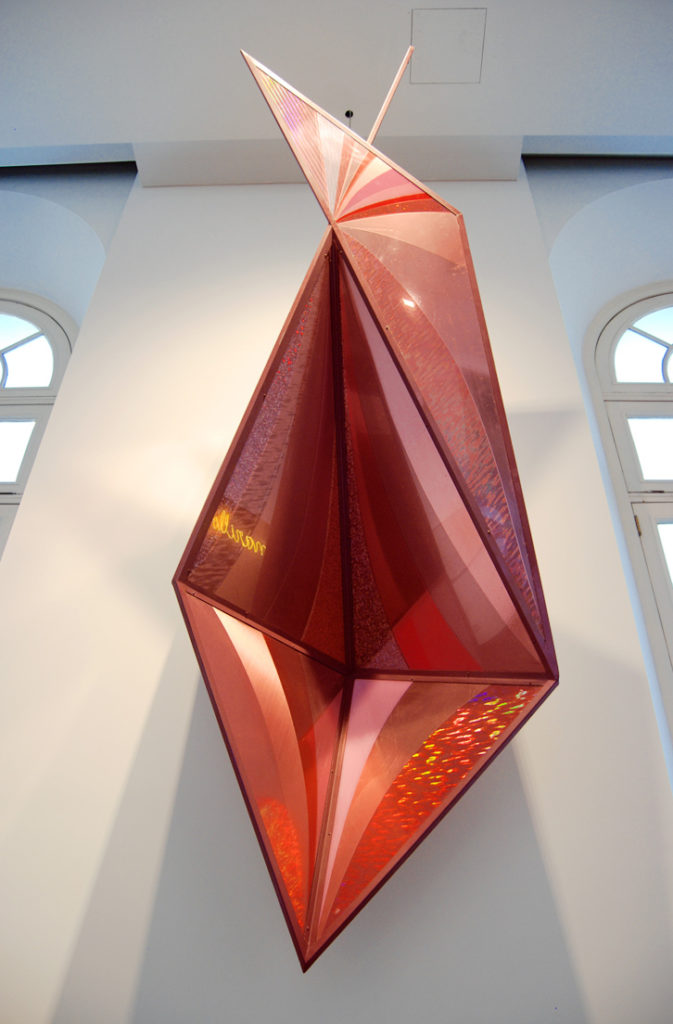
«˅˅˄˄» Policarbonato compacto, vinilo, hierro esmaltado, 360 x 120 x 80 cm (roza) 2015. / «˅˅˄˄» Compacto polycarbonate, foil, enamel iron, 360 x 120 x 80 cm (roza) 2015.
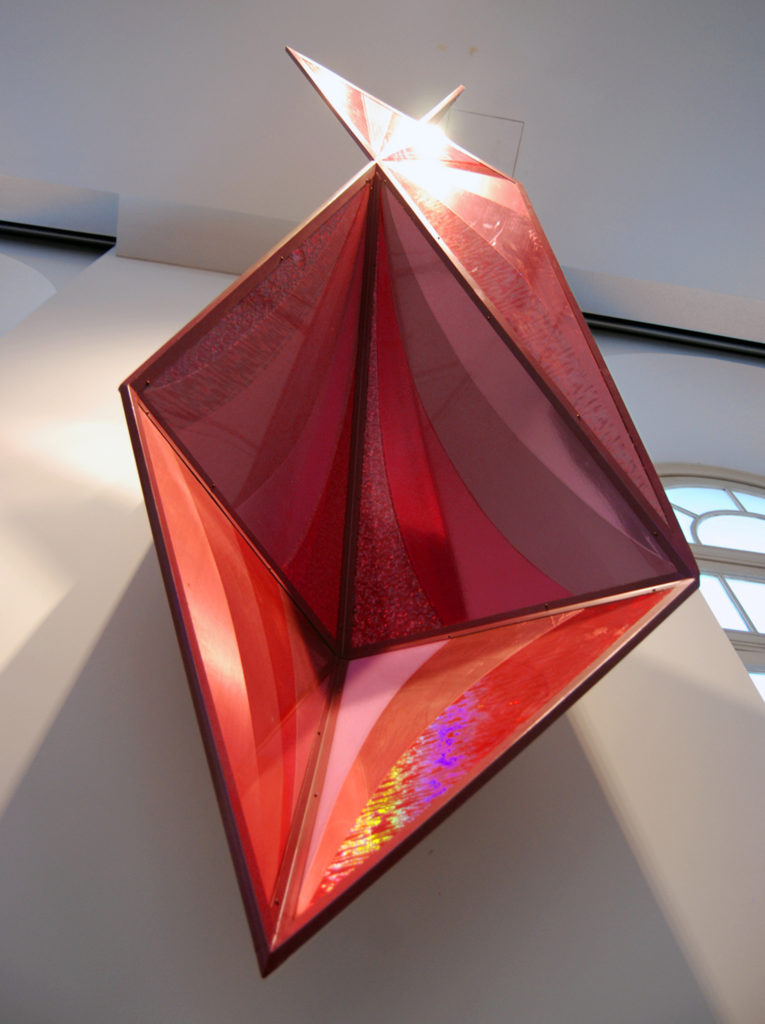
«˅˅˄˄» Policarbonato compacto, vinilo, hierro esmaltado, 360 x 120 x 80 cm (roza) 2015. / «˅˅˄˄» Compacto polycarbonate, foil, enamel iron, 360 x 120 x 80 cm (roza) 2015.

«˅˅˄˄» Policarbonato compacto, vinilo, hierro esmaltado, 400 x 80 x 70 cm, 2015. / «˅˅˄˄» Compacto polycarbonate, foil, enamel iron, 400 x 80 x 70 cm, 2015.



«˅˅˄˄» Policarbonato compacto, vinilo, hierro esmaltado, 400 x 80 x 70 cm, 2015. / «˅˅˄˄» Compacto polycarbonate, foil, enamel iron, 400 x 80 x 70 cm, 2015.
Lilium tigrinum annuncazioni
Lilium Tigrinum Annunciazioni, es un libro que surge de la lectura de «El corazón Aventurero» de Ernst Jünger y de una de las anunciaciones más emblemáticas de Fra Angélico. Las imágenes del libro fueron realizadas utilizando Inkling, un instrumento híbrido analógico-digital desarrollado por Wacom. Se trata de un bolígrafo que permite generar simultáneamente una producción de carácter analógico —un dibujo efectuado con tinta sobre el papel ―, y un dibujo digital generado a través de un receptor láser que lo almacena como archivo editable. Como sucede con toda tecnología novedosa, el bolígrafo Inkling se muestra tan inicialmente prometedor como inciertamente eficaz; de hecho, los registros digitales que genera presentan una serie de glitches o “errores”. No obstante, esos «errores» resultan propicios y en su descontrol técnico, ponen de manifiesto una gestualidad que convive con el fantasma digital de lo similar pero nunca igual. El libro está revelado a partir de un proceso heliográfico.
» Lilium tigrinum. Pétalos harto combados abajo, de un rojo céreo, carmíneo, moteado delicadamente pero con gran viveza por unas manchas ovales de un negro azulado(…) Estambres de colores narcóticos, como terciopelo caoba oscuro cubierto por una capa de finísimo polvo molido.»
El corazón aventurero. Figuras y caprichos. Ernst Jünger. 1932
Lilium Tigrinum Annunciazioni, is a book that emerged from the reading of «The Adventurous Heart» by Ernst Jünger and one of the most emblematic announcements of Fra Angelico. The images in the book were made using Inkling, an analog-digital hybrid instrument developed by Wacom. It is a pen that allows the simultaneous generation of an analogical production -a drawing made with ink on paper-, and a digital drawing generated through a laser receiver that stores it as an editable file. As with any new technology, the Inkling pen is as promising as it is uncertainly effective; in fact, the digital records it generates have a number of glitches or «errors». Nevertheless, these «errors» are favorable and in their technical lack of control, they show a gesture that coexists with the digital ghost of the similar but never equal. The book is revealed through a heliographic process.
«Lilium tigrinum. Petals quite curved below, of a red waxy, carmine, mottled delicately but with great vivacity by some oval spots of a bluish black (…) Stamens of narcotic colors, like dark mahogany velvet covered by a layer of fine ground powder.»
The adventurous heart. Figures and whims. Ernst Jünger. 1932
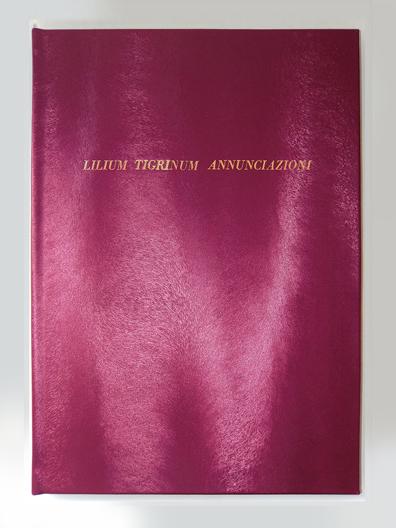
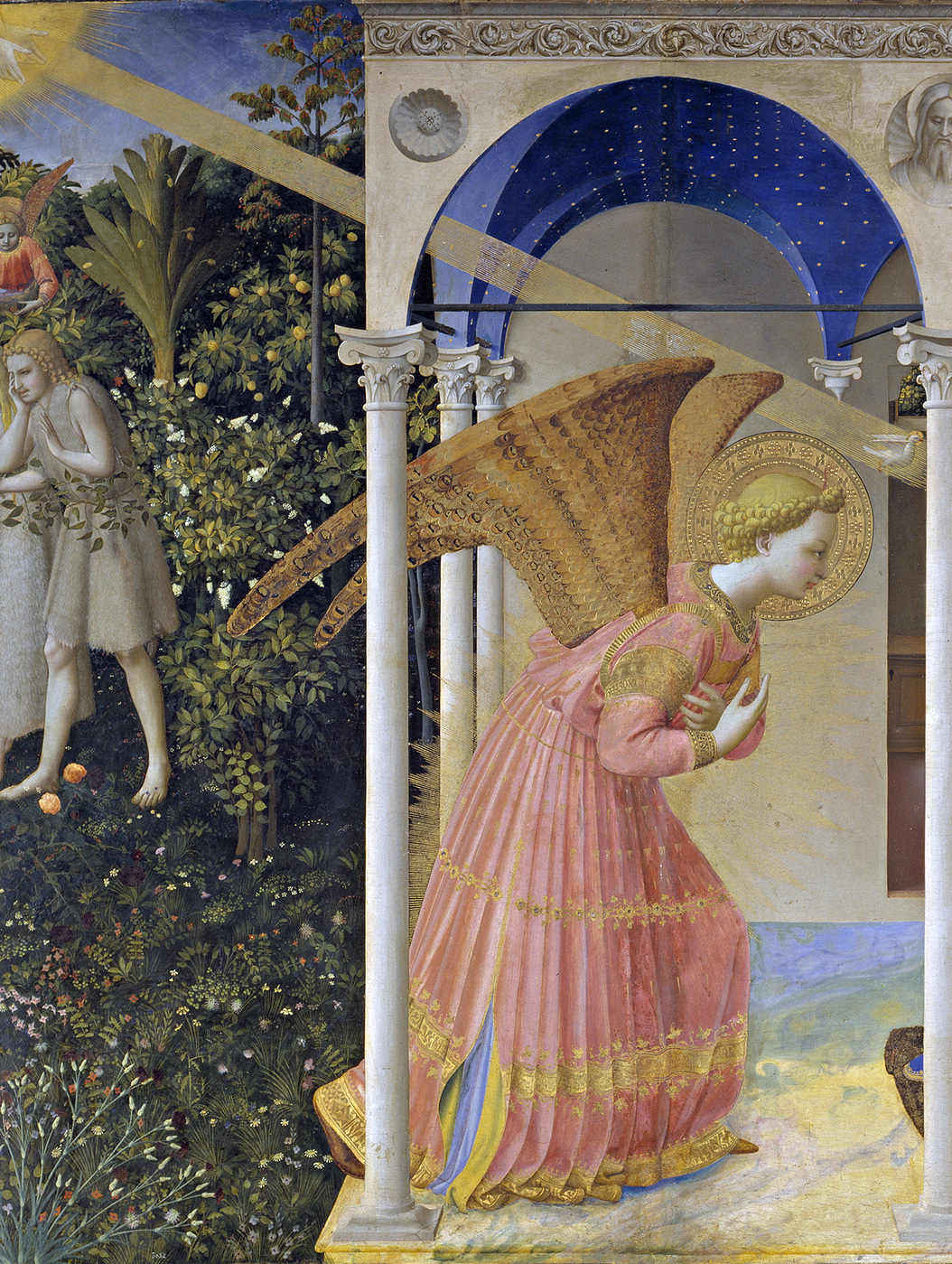

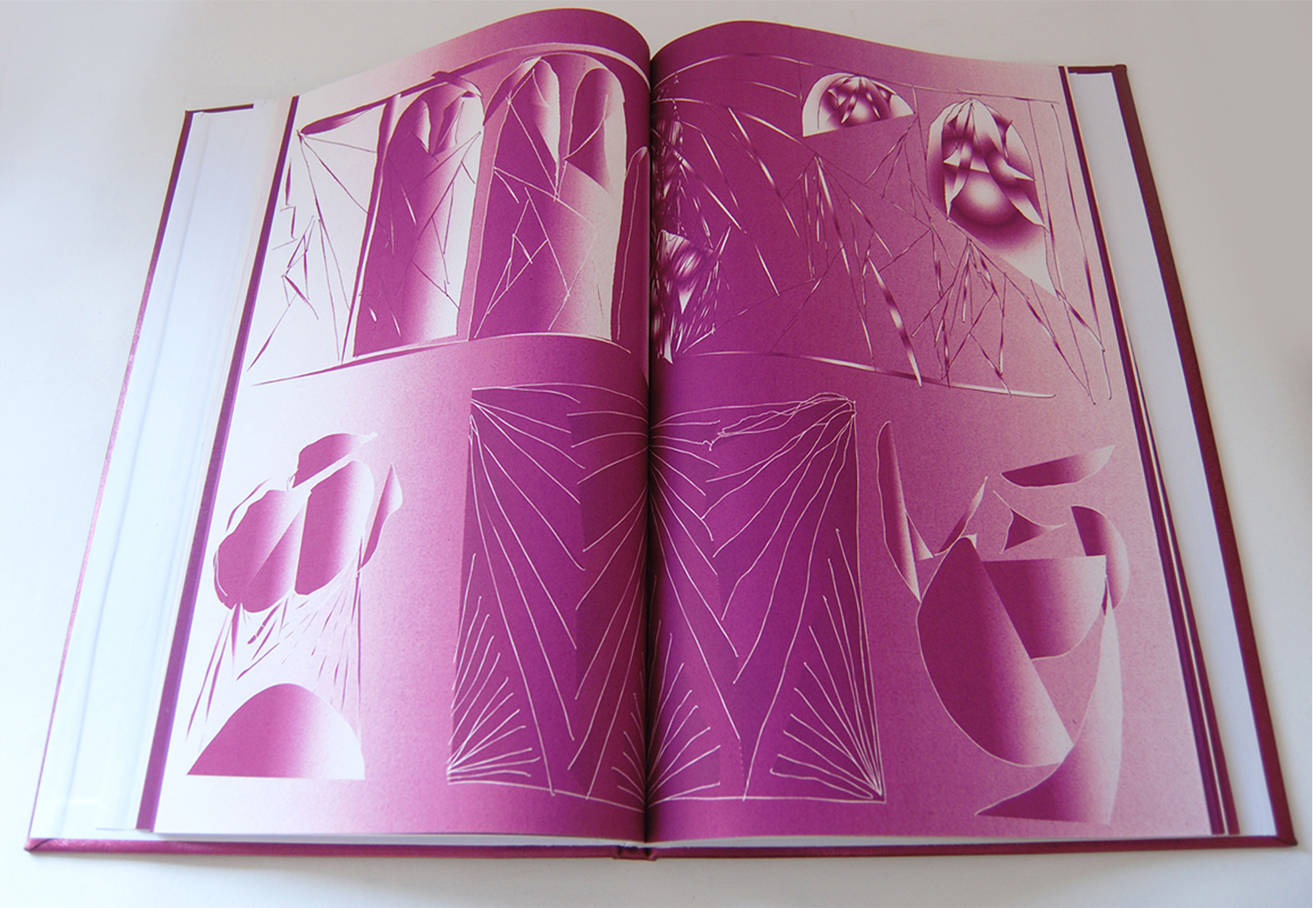

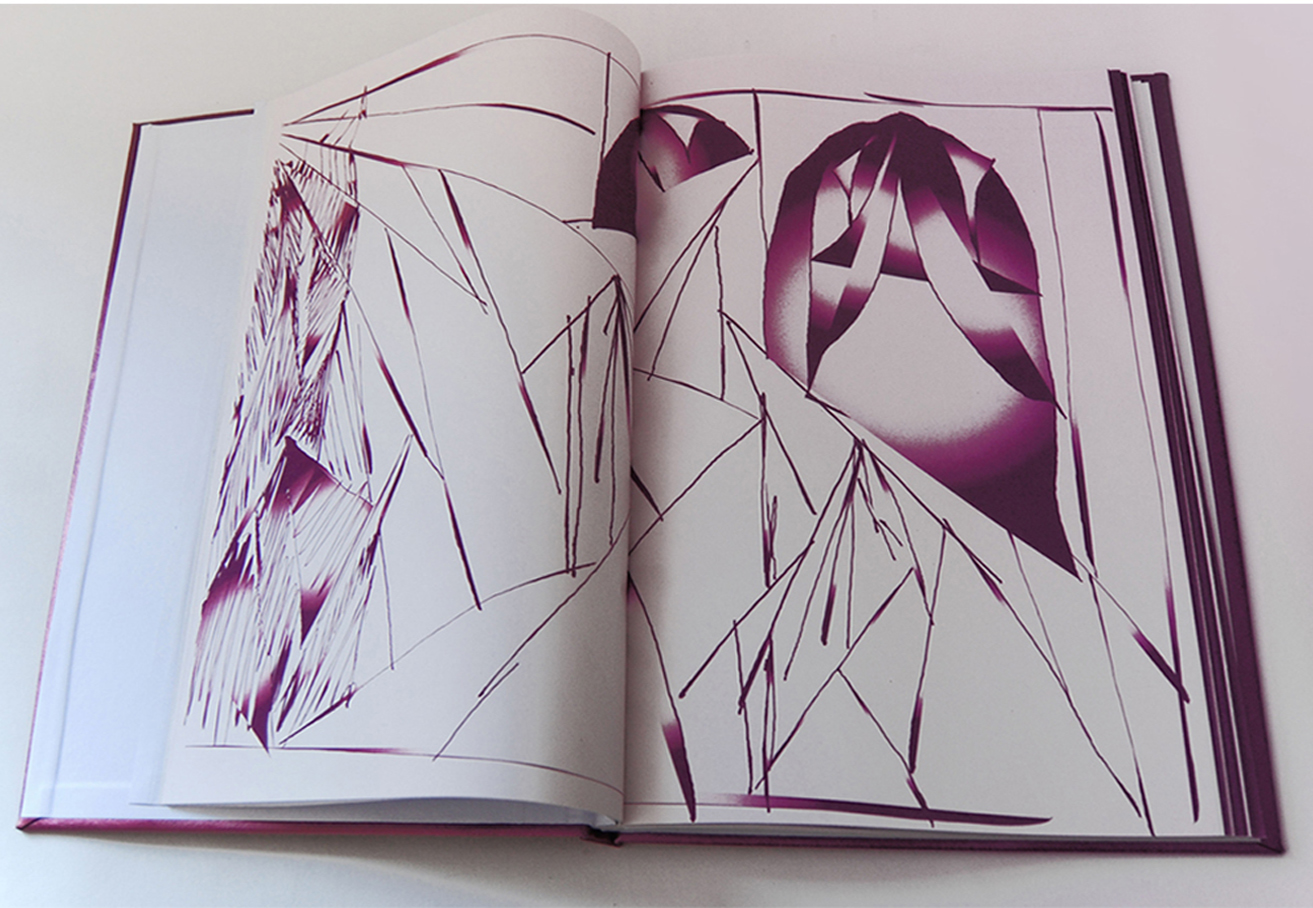
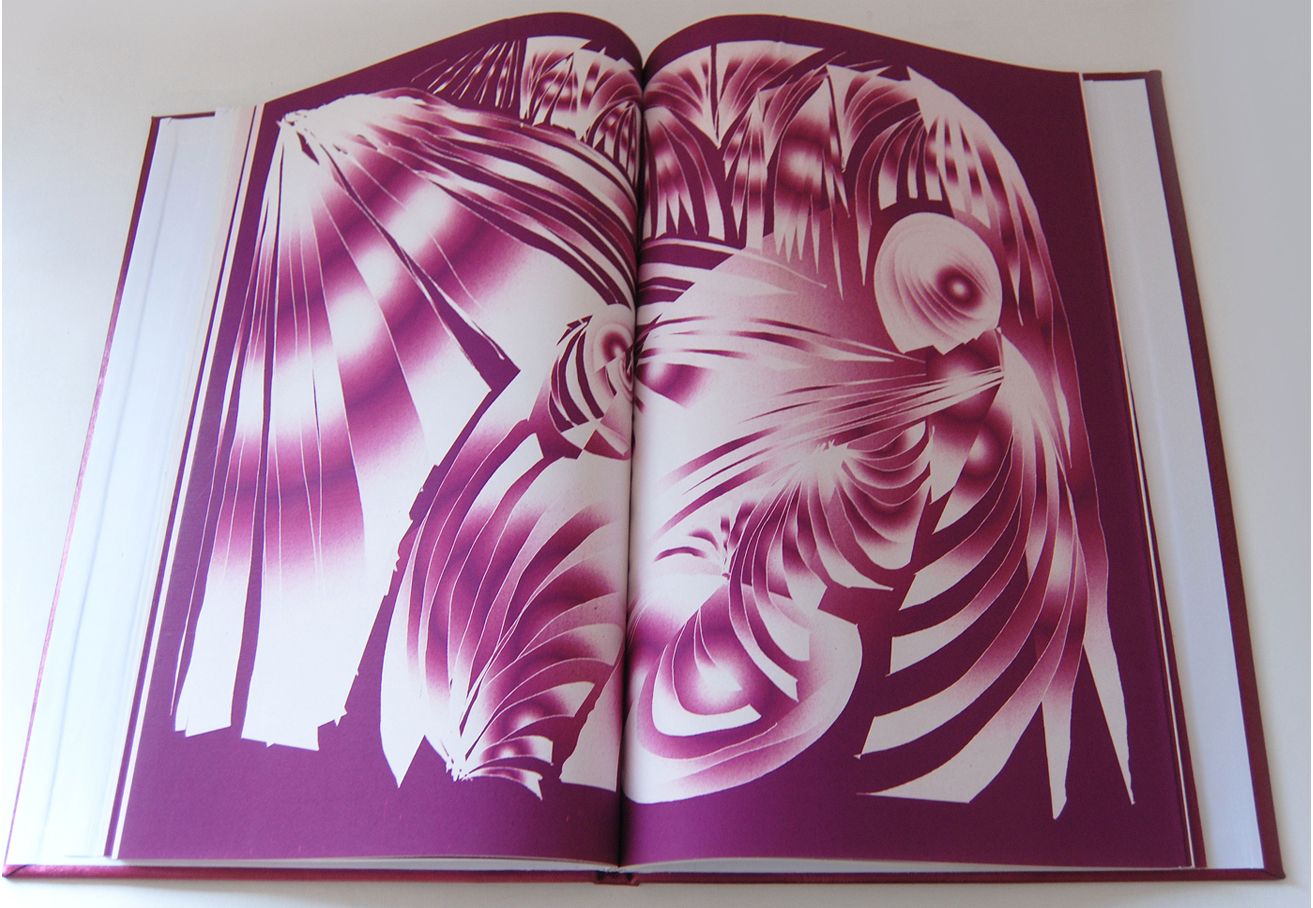
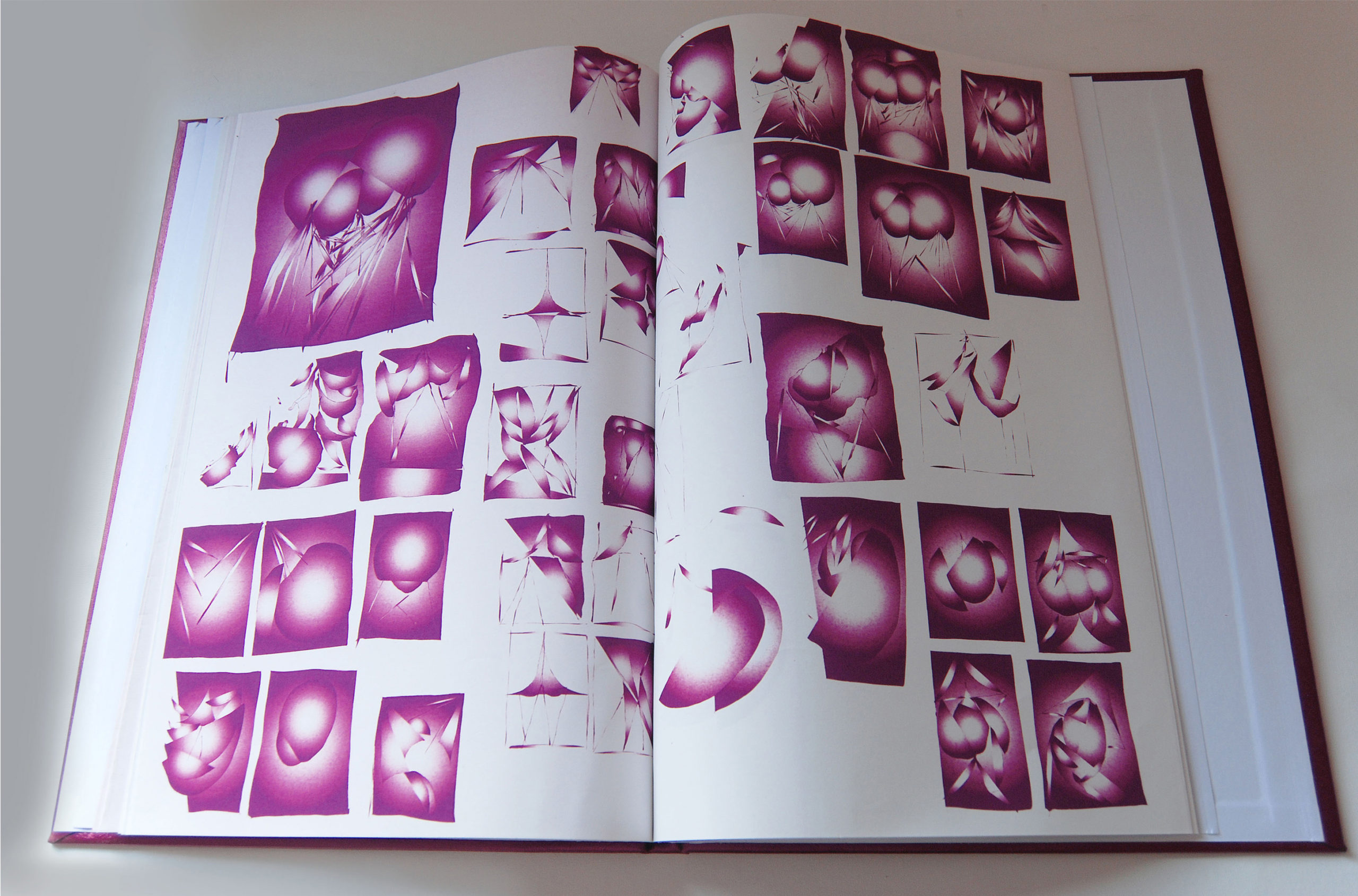
«Lilium Tigrinum Annunciazioni» Libro, Heliografía, 38 x 28 cm, 19 páginas, 2015. / «Lilium Tigrinum Annunciazioni» Book, Heliography, 38 x 28 cm, 19 pages, 2015.
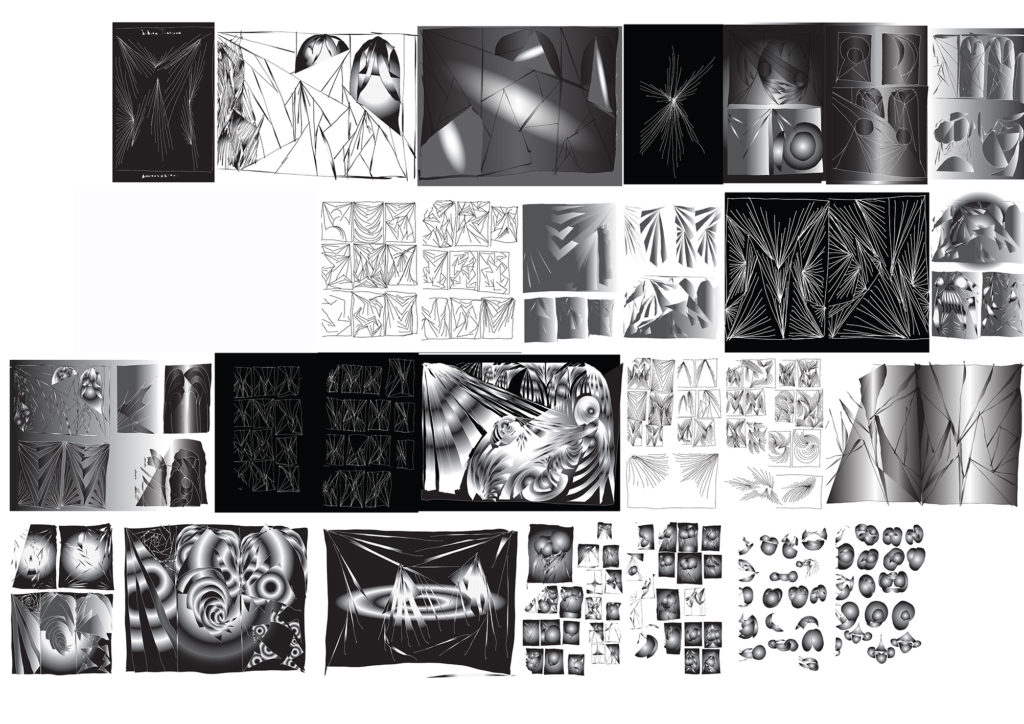
Estrellas / Ombligos
Estrellas / Ombligos es una serie de objetos que en su forma romboidal intentan contener y reflejar a través de un filtro de cromaticidades móviles todo aquel par de ojos y objetos que pasen cerca de su radio. Las caras internas poseen materiales reflectantes mientras que las externas intentan camuflarse con la pared en la que se instalan. Estrellas y ombligos a la vez, muestran y ocultan mientras se pliegan en un tiempo originario.
Los vidrios de las piezas fueron realizados por un grupo de vidrieros, cuya vidriería en la calle Murillo, en Buenos Aires, ya desapareció. Distintos efectos y procesos fueron realizados sobre cada cara de las piezas.
Stars / Bellybuttons is a series of objects that in their rhomboidal shape try to contain and reflect, through a filter of mobile chromaticities, glances and objects that pass near their radius. The internal faces have reflective materials while the external ones try to camouflage themselves with the wall on which they are installed. Stars and belly buttons at the same time, show and hide while they fold in an originary time.
The glass of the pieces was made by a group of glassmakers, whose glass shop on Velazco Street in Buenos Aires has already disappeared. Different effects and processes were performed on each face of the pieces.
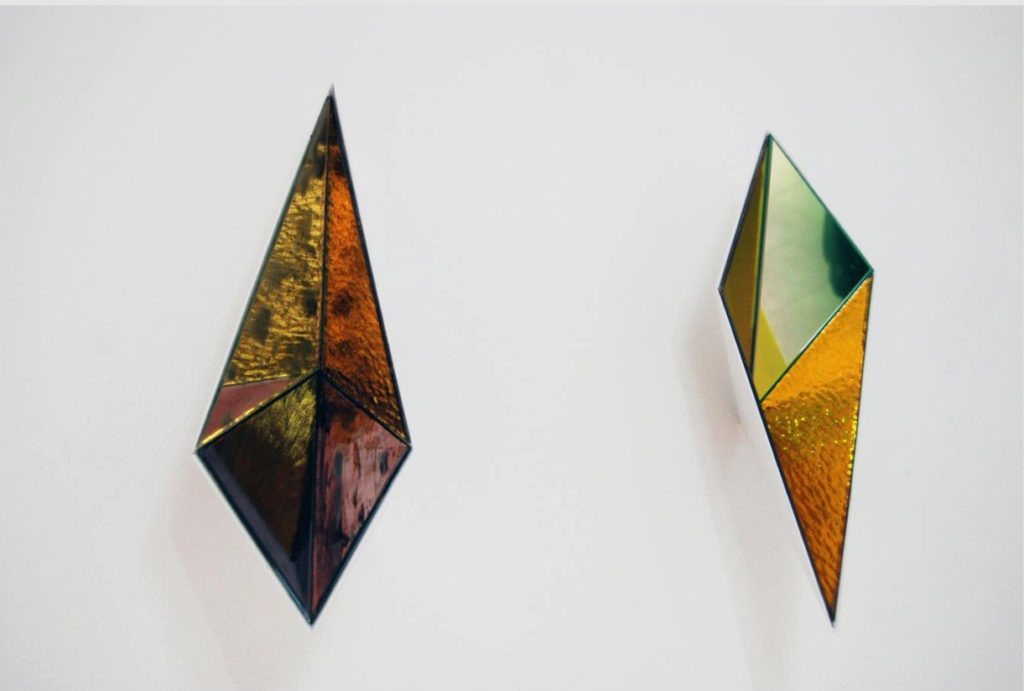
Film polarizado, vidrio, metal, 35 x 17 x 15 cm – cada pieza-,2015. / Polarized film, glass, metal, , 35 x 17 x 15 cm – each-, 2015.


Film polarizado, vidrio, metal, 35 x 17 x 15 cm – cada pieza-,2015. / Polarized film, glass, metal, , 35 x 17 x 15 cm – each-, 2015.
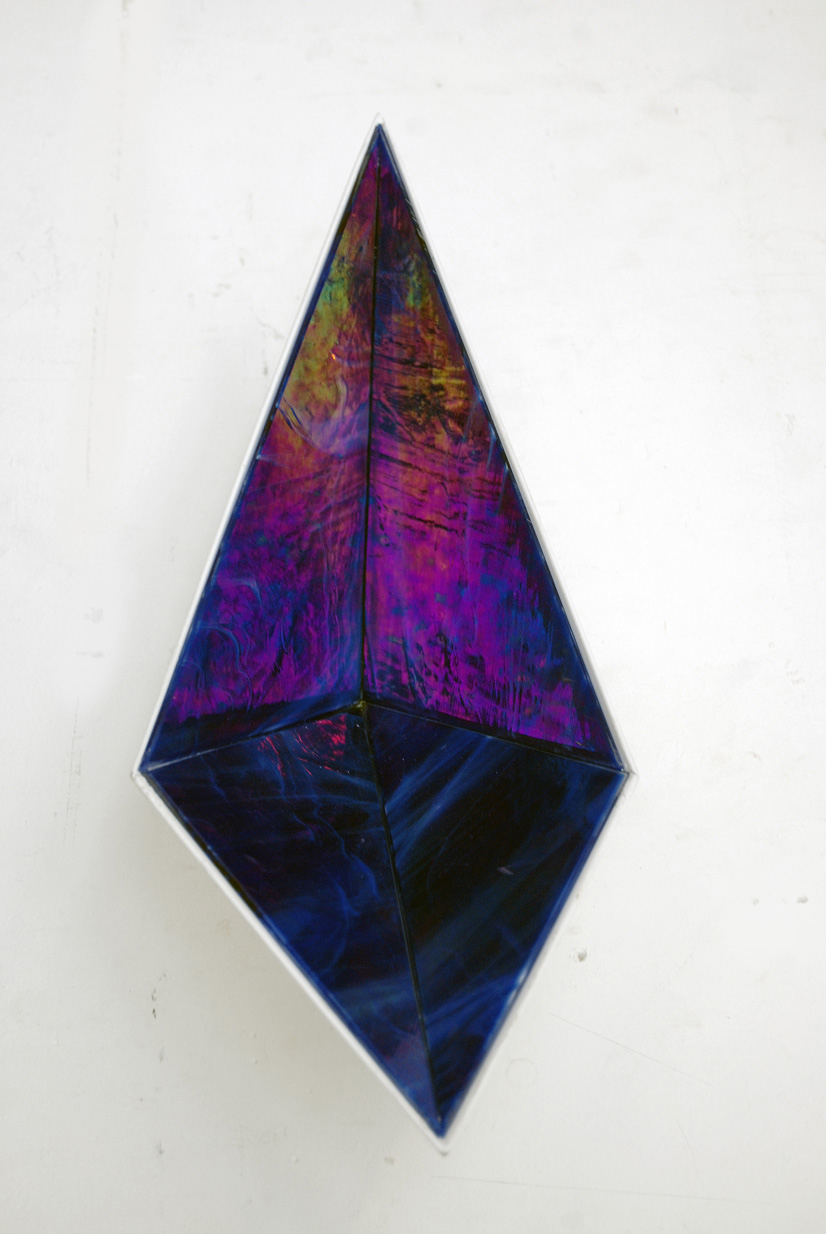

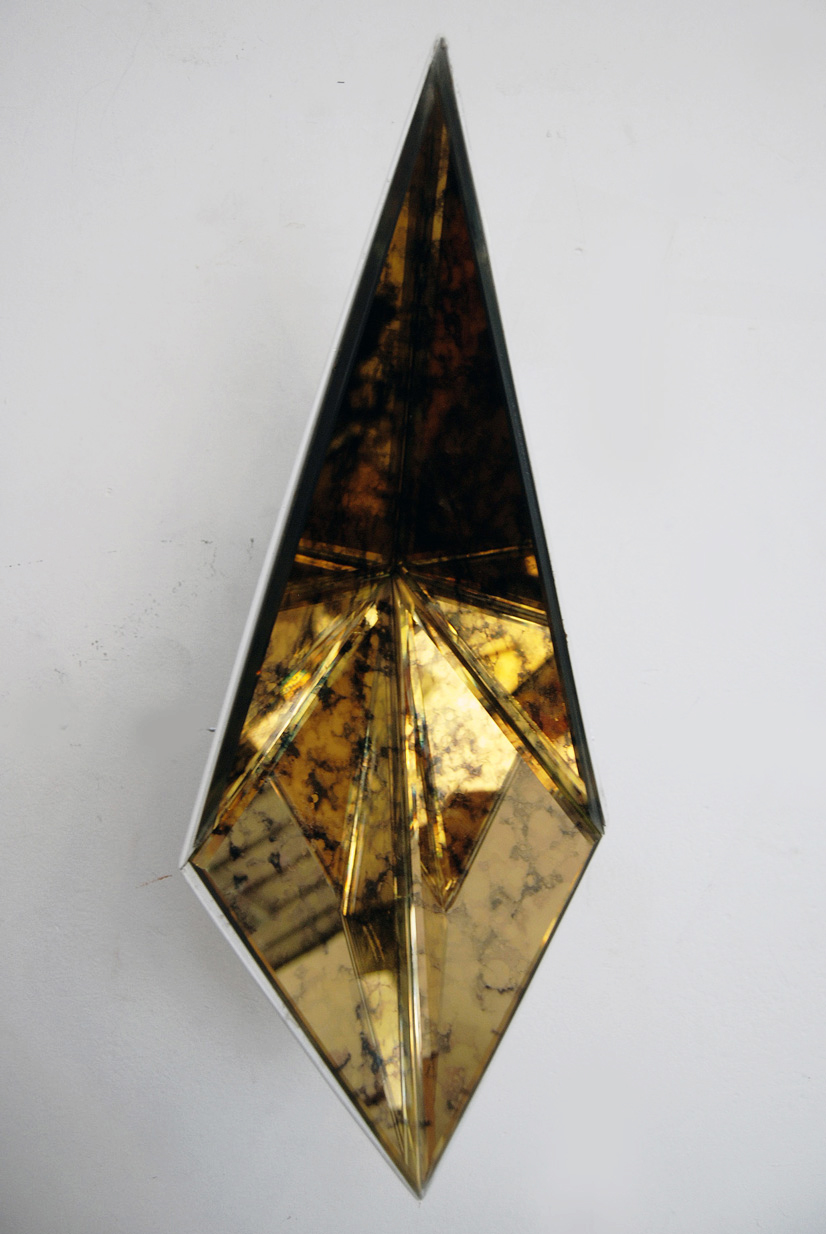

Film polarizado, vidrio, metal, 35 x 17 x 15 cm,2015. / Polarized film, glass, metal, , 35 x 17 x 15 cm, 2015.
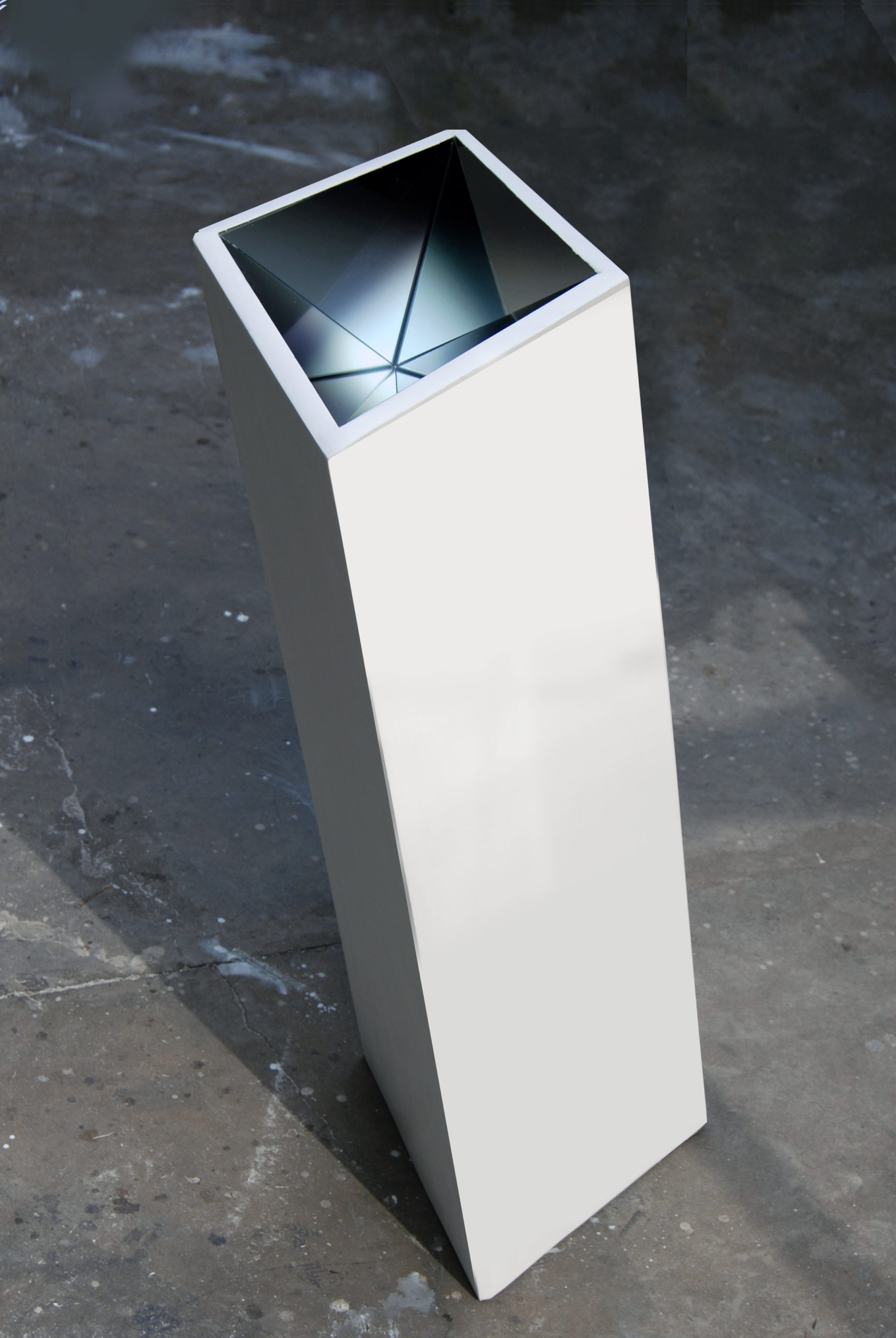

«Fuente umbilical» Film polarizado, vidrio, MDF, 45 x 50 x 120 cm , 2015. / «Umbilical fountain» Polarized film, glass, wood, 45 x 50 x 120 cm , 2015.